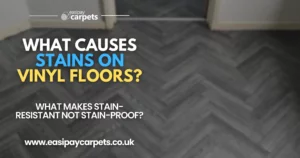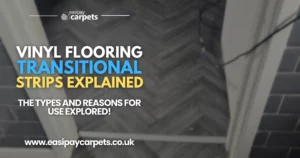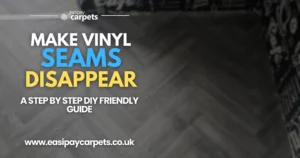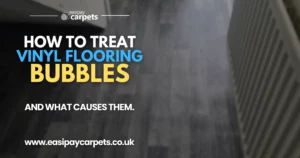
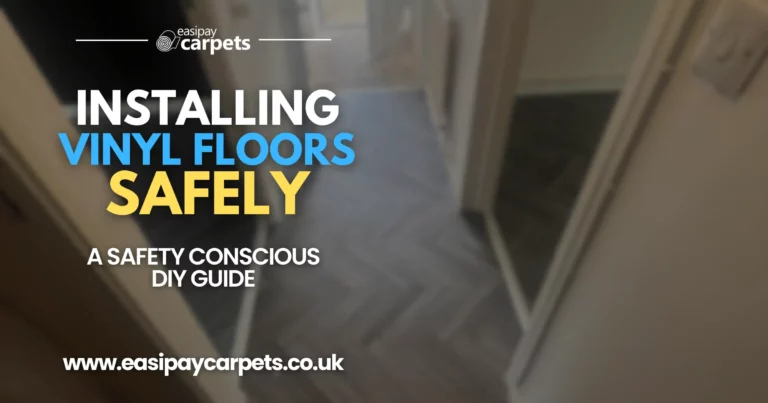
Stay Safe While Installing Vinyl Flooring: Essential Tips for DIYers
Safety Tips for Installing Vinyl Flooring
Installing vinyl flooring is a rewarding DIY project that can transform the look of a room. While the process is relatively straightforward, it’s important to prioritise safety to avoid accidents or injuries. From handling sharp tools to ensuring proper ventilation, following safety guidelines ensures a smooth and trouble-free installation.
This guide highlights the most important safety tips to keep in mind when installing vinyl flooring.
1. Wear Appropriate Safety Gear
Protective clothing and gear are essential when working with tools and materials.
- Safety Goggles: Protect your eyes from dust, flying debris, or accidental contact with sharp tools.
- Gloves: Wear durable gloves to prevent cuts while handling sharp tools or vinyl edges.
- Dust Mask: Use a mask when cutting vinyl to avoid inhaling dust and particles.
- Knee Pads: Protect your knees while working on hard floors for extended periods.
- Sturdy Shoes: Closed-toe shoes help prevent foot injuries from dropped tools or materials.
2. Work in a Well-Ventilated Area
Vinyl flooring adhesives and sealants can release strong fumes during installation.
- Ensure Airflow: Open windows and doors or use a fan to improve air circulation.
- Avoid Prolonged Exposure: Take regular breaks to minimise fume inhalation.
- Check Labels: Use low-VOC (volatile organic compounds) adhesives and materials whenever possible.
3. Handle Tools Safely
Using the right tools correctly is crucial for avoiding injuries.
- Utility Knives: Always cut away from your body to avoid accidental injuries. Use a sharp blade for cleaner cuts and less resistance.
- Saws: If using a circular saw or jigsaw, ensure the blade is designed for vinyl flooring. Wear safety goggles and keep your hands clear of the blade.
- Measuring Tools: Use a T-square or straight edge for precise measurements and to prevent slips while cutting.
4. Prepare the Workspace
A clean and organised workspace reduces the risk of accidents.
- Clear the Area: Remove furniture, rugs, and obstacles before starting.
- Secure Loose Wires: Avoid tripping hazards by securing extension cords and tools.
- Use a Stable Surface: Work on a flat, sturdy surface when cutting or measuring vinyl.
5. Lift and Carry Materials Safely
Vinyl flooring can be heavy, especially in large rolls or bundles.
- Use Proper Lifting Techniques: Bend your knees and lift with your legs, not your back, to avoid strain.
- Ask for Help: For heavy or bulky items, enlist a helper to prevent overexertion.
6. Check for Electrical and Plumbing Hazards
If your installation involves removing existing flooring or cutting around pipes and fixtures, be mindful of potential hazards.
- Turn Off Power: Switch off electricity in the room to avoid contact with electrical wiring.
- Mark Plumbing Lines: Identify and mark any water pipes to prevent accidental damage.
7. Keep Tools and Materials Out of Reach of Children and Pets
Sharp tools and small objects can pose dangers to curious children or pets.
- Designate a Work Zone: Set up a safe area where children and pets are kept away from the workspace.
- Store Tools Safely: Place tools and adhesives in a secure location when not in use.
8. Use Adhesives and Sealants Responsibly
If your vinyl flooring requires adhesive, take precautions to use it safely.
- Read Instructions: Follow the manufacturer’s guidelines for application and drying times.
- Avoid Skin Contact: Wear gloves to prevent adhesives from coming into contact with your skin.
- Dispose of Waste Properly: Discard used adhesive containers and applicators according to local regulations.
9. Plan Your Cuts Carefully
Measure twice and cut once to minimise mistakes and the need for excessive handling.
- Practice First: Test your cutting technique on a scrap piece of vinyl to avoid errors.
- Use Proper Lighting: Work in a well-lit area to ensure precise cuts and reduce eye strain.
10. Take Regular Breaks
Installing vinyl flooring can be physically demanding.
- Avoid Fatigue: Take short breaks to stretch and hydrate, especially during long projects.
- Check Your Work: Use breaks to assess your progress and ensure accuracy.
11. Dispose of Old Flooring and Waste Safely
If removing existing flooring, handle and dispose of materials responsibly.
- Watch for Asbestos: Older vinyl or tile flooring may contain asbestos. Consult a professional if you suspect this.
- Recycle When Possible: Check local recycling options for old flooring and packaging materials.
- Bag Sharp Objects: Place nails, staples, or sharp debris in a sturdy bag to prevent injuries during disposal.
Conclusion
Installing vinyl flooring can be a rewarding DIY project when safety is prioritised. By wearing the right protective gear, using tools responsibly, and maintaining a clean, organised workspace, you can minimise risks and enjoy a smooth installation process. With these safety tips in mind, you’ll be well-prepared to create a beautiful, durable floor that enhances your home.
Easipay Carpets can help you get brand new flooring without the high up-front cost – by simply letting you spread the cost of the flooring over time instead. There’s no interest on our plans so you aren’t spending a penny more than you would buying it outright and we include underlay, door trims, carpet grippers and laminate beading for free. Prices start from just £10 per week!
It starts with a free home appointment and quote, to get booked in at a time that suits you, tap the “Get Started” button below and fill out the contact form!
Still Got Questions? Here's 10 FAQs!
Yes, safety gear like gloves, goggles, and knee pads is recommended to protect yourself during installation.
No, proper ventilation is essential to avoid inhaling fumes from adhesives or sealants.
Common tools include a utility knife, tape measure, straight edge, and adhesive (if required).
Always cut away from your body and use a sharp blade to minimise resistance.
Yes, a dust mask is recommended to protect against particles created when cutting vinyl.
Consult a professional to safely remove and dispose of any materials that may contain asbestos.
Yes, but keep pets out of the workspace to avoid accidents with tools or materials.
Use proper lifting techniques and enlist help for heavy or bulky rolls.
Wear gloves and use an applicator to handle adhesives safely.
Yes, if the existing flooring is flat, clean, and stable, but always check the manufacturer’s guidelines.
